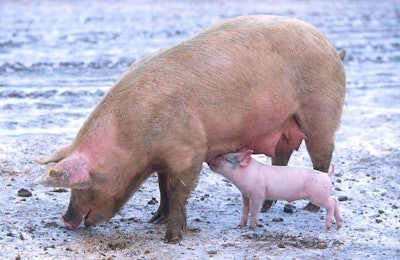
Pig husbandry experts warned of the continuing threat of antibiotic resistant bacteria and discussed what the pig producers can do to address the problem, while speaking at the Alltech Elite Herd Dinner, which took place during the 24th International Pig Veterinary Society Congress held in Dublin, Ireland. Registration, veterinarian oversight and other biosecurity measures were presented as means to prevent what one researcher called an apocalypse scenario.
The critical issues surrounding antibiotic resistance and its role in animal protein production were presented by Richard Murphy, research director at Alltech’s European headquarters and bioscience center. He also shared possible strategies whereby livestock producers may position themselves as antibiotic-free.
“As cases of antimicrobial resistance are on the rise in agriculture, the significant threat to human health becomes more substantial,” said Murphy in a press release. “In China, for example, colistin resistance has spread from animals to humans.”
According to Murphy, a Princeton study estimates that the global use of antibiotics in animal production will increase by more than 60 percent between 2010 and 2030, a trend driven primarily by usage in BRIC (Brazil, Russia, India and China) countries.
“I don’t want to sound sensationalist, but without efforts to reduce reliance on antibiotics in livestock and animal production, we could be heading for an apocalypse scenario,” said Murphy.
At the Alltech dinner, Ana Catharina Berge, owner and veterinary consultant at Berge Veterinary Consulting BVBA, explained how many European countries now have antibiotic reduction plans. Sweden, Finland and Norway, for example, have prohibited prophylactic/growth promoting use since the 1980s, with registration and veterinary control required for all antimicrobials. Considering this, she posed the question: Can we do more as producers?
Benchmarking is important in the pig industry as it allows producers to set clear goals against best practice, production and efficiency models. By measuring specific metrics on-farm, the producer can become more efficient, profitable and sustainable.
“Benchmarking is big in Belgium and it is something we could all learn from,” said Berge. “The country has adopted a clear reduction approach, which is systematic, well analysed and allows all producers to participate.”
According to the UN Food and Agriculture Organization, “one of the most common routes of transmission for infectious agents is direct pig-to-pig contact; movement of infected pigs in close physical contact with non-infected pigs is decisive in transmitting diseases.” Biosecurity, procedures or measures designed to protect the population against harmful biological or biochemical substances, has become a popular topic in agriculture due to an increase in disease transmission.
In the coming years, we may see an increase in biosecurity on-farm. Efficiencies, through biosecurity, may allow pig producers to reduce antibiotic use and treatment costs, resulting in higher productivity.
“The antibiotic reduction program by Alltech is an industry-initiated program whereby farms get total herd audits and recommendations for efficient performance and increased herd profitability with resulting reduction in antimicrobial use,” said Berge.
By improving antibiotic registration systems, carrying out independent farm monitoring, benchmarking and improving biosecurity, European pig producers can reduce the transmission of antibiotic-resistant bacteria in the food chain.

















